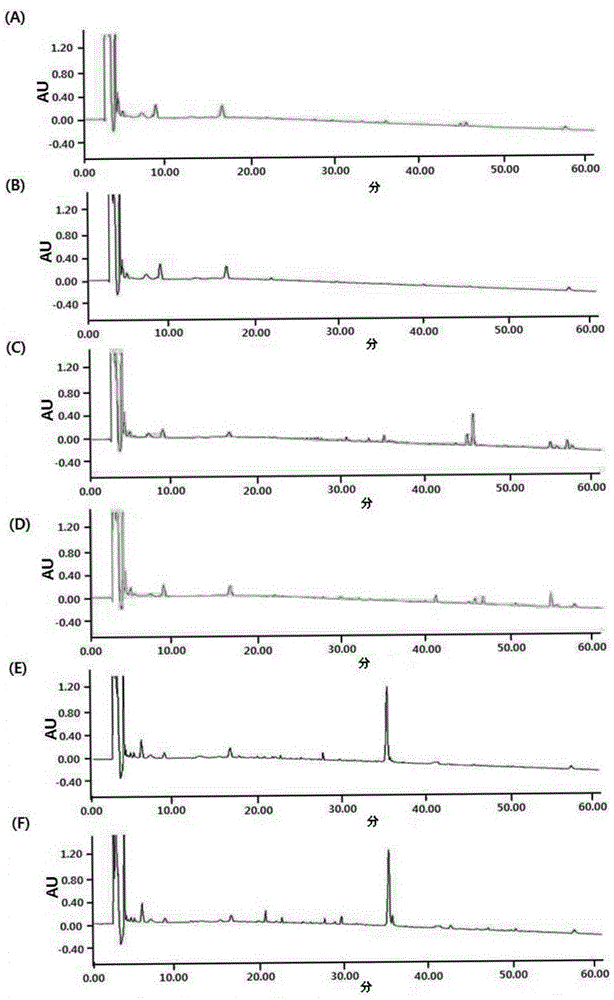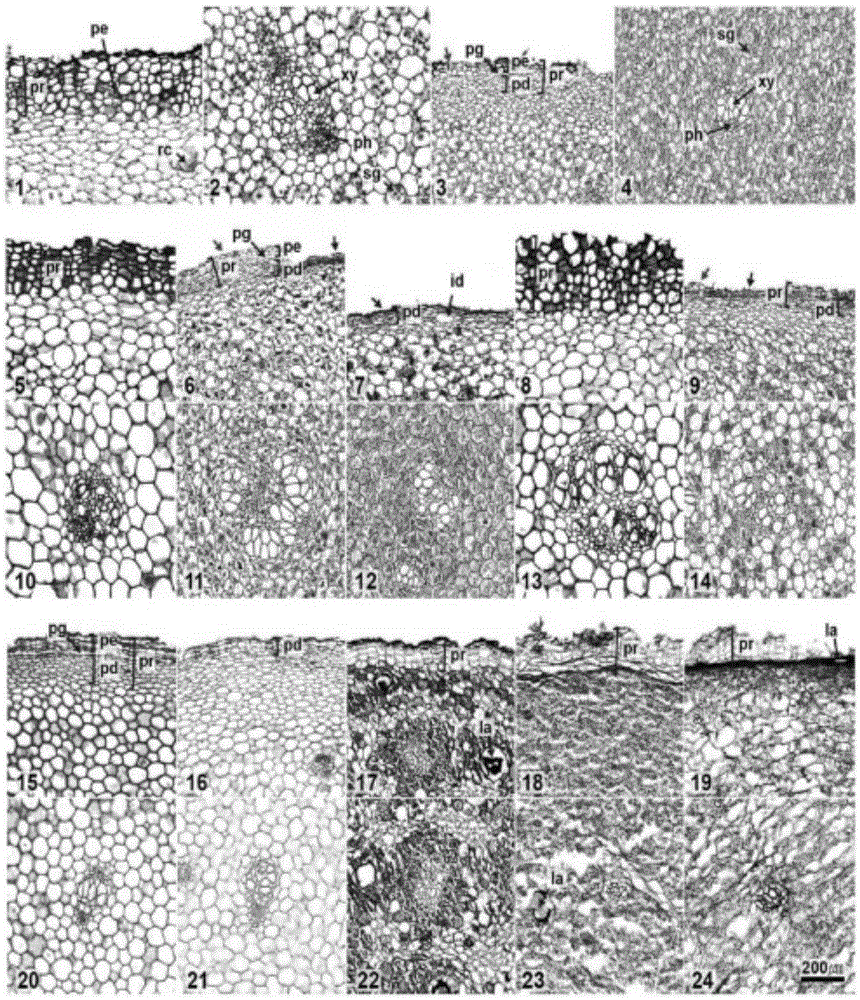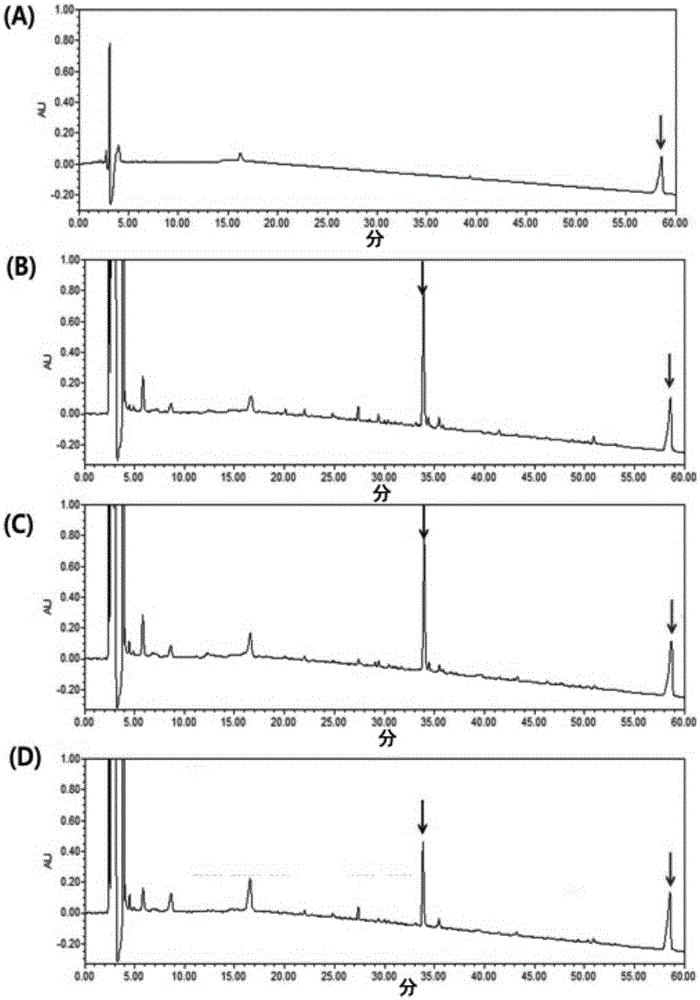Method for discriminating rhizoma dioscoreae nipponicae medical materials
A technology for yam and wild yam, which is applied in the field of identification of Dioscorea chuanensis and wild yam, can solve problems such as unsatisfactory, lack of identification standards and distinctions.
- Summary
- Abstract
- Description
- Claims
- Application Information
AI Technical Summary
Problems solved by technology
Method used
Image
Examples
Embodiment 1
[0038] Example 1. Morphological analysis of Dioscorea nigra and wild yam
[0039] In this Example 1, the internal structure was analyzed morphologically using collected and circulating products of Dioscorea nigra and wild yam.
[0040] The completely dried medicinal materials were cut into a thickness of about 3 mm, and for the restoration and softening of the dried tissue, pretreatment was performed in boiling water at 100°C for 10 minutes. After that, in order to dehydrate the tissues, 10%, 20%, 35%, 50% and 75% of thiobarbituric acid were treated in a manner of 4 hours each in each step. Finally, 100% Thiobarbituric acid was treated twice for 4 hours each time. Under the temperature condition of 60°C, the dehydrated tissue was treated with 100% paraffin (paraffin, melting point 56-58°C) twice for 4 hours each time, and then embedding. The embedded tissue was cut into a thickness of 10-20 μm using a Leica flat push microtome (Leica SM 2010R), and the tissue section was adhered ...
Embodiment 2
[0048] Example 2. Extraction of Dioscorea nigra and Wild Yam
[0049] As the dragon yam and wild yam, collected products and circulating products (CM1 to CM5) collected from Wangsan, Sancheong-gun, Gyeongsangnam-do, were used to identify the collected products in the Korean Medicine Resource Group of the Korean Academy of Oriental Medicine , And make medicinal material specimens and compressed plant specimens for storage.
[0050] In addition, in order to use the control group for comparison, the Chinese and Korean circulation products of yam (yam) and the Chinese circulation products of Dioscorea nigra (Dioscorea nigra) were purchased and used.
[0051] For material analysis, the roots of Dioscorea nigra, wild yam, and yam (yam) were washed with running water, washed again with distilled water 3 times, and dried in a desiccator at 45°C for 1 week before cutting them (2.5~5.0cm) ). After cutting, dry again for 1 week, and apply the method of Jin et al. (Integrative Medicine Researc...
Embodiment 3
[0052] Example 3. High performance liquid chromatography analysis of Dioscorea nigra and wild yam
[0053] The extracts of Dioscorea nigra, wild yam, and yam (yam) obtained in Example 2 were used for high performance liquid chromatography analysis.
[0054] For high performance liquid chromatography reagents (distilled water, acetonitrile, etc.), HPLC grades are used. Use a high performance liquid chromatograph (waters Alliance 2695 system) equipped with a photodiode array detector (2996photodiode array detector) and a Phenomenex Luna C18column (250mm×4.6mm; particle size 5μm) , Analysis at 254nm.
[0055] Use 0.1% (v / v) trifluoroacetic acid aqueous solution (A) and acetonitrile (B) as mobile phases at a ratio of 90% (A): 10% (B) for 10 minutes, from 10 minutes to 60 minutes was performed by changing the gradient at a ratio of 40% (A): 60% (B), and the temperature was maintained at 40° C., the flow rate was 1.0 ml / min, and the sample injection volume was 20 μl for analysis.
[0056]...
PUM
| Property | Measurement | Unit |
|---|---|---|
| diameter | aaaaa | aaaaa |
Abstract
Description
Claims
Application Information
 Login to View More
Login to View More - R&D
- Intellectual Property
- Life Sciences
- Materials
- Tech Scout
- Unparalleled Data Quality
- Higher Quality Content
- 60% Fewer Hallucinations
Browse by: Latest US Patents, China's latest patents, Technical Efficacy Thesaurus, Application Domain, Technology Topic, Popular Technical Reports.
© 2025 PatSnap. All rights reserved.Legal|Privacy policy|Modern Slavery Act Transparency Statement|Sitemap|About US| Contact US: help@patsnap.com



